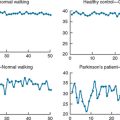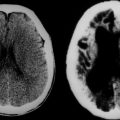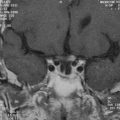CHAPTER 39 PRIMARY MYELOPATHIES (DEGENERATIVE, INFECTIVE, METABOLIC)
A number of conditions may selectively involve the spinal cord; some of these conditions also involve other neural tissues, to a lesser extent. The spinal cord neurons are relatively extensive, and as a result, they may be particularly susceptible to defects, which impair intraneuronal transport mechanisms. This chapter covers primary disorders of the spinal cord, excluding spinal cord trauma, spinal cord compression, and developmental spinal disorders; those topics are covered in Chapters 38, 40, and 99. For discussion, it is convenient to divide the primary myelopathies into acute (including subacute) and chronic clinical manifestations.
ACUTE MYELOPATHIES
Acute myelopathy, or acute transverse myelopathy, is a disorder of acute or subacute spinal cord dysfunction resulting from a variety of causes, as listed in Table 39-1. In a clinical study, de Seze and colleagues (2001) found the commonest cause to be multiple sclerosis (43%); other causes included systemic disease (16.5%), spinal cord infarction (14%), infectious or parainfectious conditions (6%), and radiation myelopathy (4%). No underlying cause was found in the remaining 16.5%, despite an average of 29 months’ follow-up. The criteria for the clinical diagnosis of acute transverse myelopathy include (1) acute/subacute onset of sensory and motor symptoms, including symptoms of sphincter dysfunction; (2) spinal segmental level of sensory disturbance with a well-defined upper limit; (3) occurrence of symptoms over no more than 3 weeks and sustained for a period of at least 48 hours; (4) no clinical or radiological evidence of spinal cord compression; and (5) no known history of neurological disease or neurological symptoms.
| Demyelination | Multiple sclerosis, acute disseminated encephalomyelitis, neuromyelitis optica |
| Systemic disorders | Systemic lupus erythematosus, sarcoid, Sjögren’s syndrome, Behçet’s syndrome, antiphospholipid syndrome, mixed connective tissue disease |
| Infectious/parainfectious | Herpes simplex viruses 1 and 2, herpes zoster virus, Epstein-Barr virus, cytomegalovirus, human herpesvirus 6, enterovirus, human immunodeficiency virus, human T cell lymphotrophic virus type 1, mycoplasma, Lyme disease, syphilis |
| Vascular | Arterial, venous, watershed, arteriovenous malformation, fibrocartilaginous embolism |
| Miscellaneous Idiopathic | Radiation myelopathy, epidural lipomatosis |
A possible infectious/parainfectious cause may manifest with certain clinical features: fever, rash, meningismus, concurrent systemic infection, immunocompromised state, recurrent genital infection, radicular burning pain with vesicles (suggestive of herpes zoster), and lymphadenopathy. In such cases, further investigation includes serum and cerebrospinal fluid viral and bacterial cultures, cerebrospinal fluid viral and bacterial polymerase chain reaction studies, and acute and convalescent serum antibody studies for the infectious agents listed in Table 39-1.
Alternatively, certain clinical features such as arthritis, erythema nodosum, xerostomia, Raynaud’s phenomenon, rash, and ulcers may be suggestive of an underlying systemic disease, such as systemic lupus erythematosus, Sjögren’s syndrome, sarcoidosis, mixed connective tissue disease, Behçet’s disease, or antiphospholipid antibody syndrome. If a systemic autoimmune disease is suspected, serum should be analyzed for antinuclear antibodies, double-stranded DNA antibodies, Ro and La antibodies, cardiolipin antibodies, lupus anticoagulant, angiotensin-converting enzyme level, β2-glycoprotein level, and complement levels. Schirmer’s test, lip/salivary gland biopsy, and chest computed tomographic scan should also be considered.
CHRONIC MYELOPATHIES
The commonest causes of chronic myelopathy seen in neurological practice include spinal multiple sclerosis, cervical spondylitic radiculomyelopathy, and sporadic motor neuron disease. These topics are covered in more detail elsewhere in the book. Patients with chronic myelopathy typically present with gradually progressive spastic paraparesis and varying spastic paresis of the upper limbs. The extent of sensory loss varies according to the nature of the underlying neuropathology. Sphincter dysfunction is also commonly seen. Causes of chronic myelopathy are listed in Table 39-2.
Spinal Muscular Atrophy
Spinal muscular atrophy (SMA) is a hereditary degenerative disorder involving the anterior horn cells, spinal interneurons, and, in some cases, the bulbar nuclei. The childhood-onset, autosomal recessive, proximal form is the commonest variation of the disorder. The incidence ranges from 1 per 6000 to 1 per 10,000. It is a common genetic cause of death and disability in childhood. The disorder has traditionally been classified into types I, II, and III by age at onset and by severity. Type I, also known as Werdnig-Hoffman disease, is characterized by early age at onset (before 6 months of age) and severe muscle weakness, muscle wasting, and hypotonia. Death from respiratory failure often occurs before the age of 2 years. Type III, also known as Kugelberg-Welander disease, begins after the age of 18 months and is of milder severity. Affected patients usually survive into adulthood, and many can walk or stand without assistance. Type II is an intermediate form. Additional clinical features of SMA include hyporeflexia, tongue fasciculations, and hand tremor. Sensory loss and sphincter disturbance are absent. The electrophysiological investigations reveal changes in denervation on electromyography and normal sensory/motor conduction velocities. Muscle biopsy also reveals denervative changes with hypertrophic fibers.
Hepatic Myelopathy
A rare progressive myelopathy may occur in the setting of chronic liver disease and may be part of the clinical spectrum, which includes acquired hepatocerebral degeneration. Patients typically have spastic paraparesis with minimal sensory involvement. Pathologically, there is symmetrical demyelination of the lateral pyramidal tracts with a degree of axonal loss. Differential effects of the exposure to toxic metabolic substances that bypass the liver may explain the resultant neurological manifestations (i.e., hepatic myelopathy versus acquired hepatocerebral degeneration).
Adrenomyeloneuropathy
De Seze J, Stojkovic T, Breteau G, et al. Acute myelopathies: clinical, laboratory and outcome profiles in 79 cases. Brain. 2001;124:1509-1521.
Green R, Kinsella L. Current concepts in the diagnosis of cobalamin deficiency. Neurology. 1995;45:1435-1440.
Kumar N, Gross JB, Ahlskog JE. Copper deficiency myelopathy produces a clinical picture like subacute combined degeneration. Neurology. 2004;63:33-39.
Miller AE, editor. Spinal cord disorders [June issue]. Continuum: Lifelong Learning in Neurology. 2005;11(3).
Transverse Myelitis Consortium Working Group. Proposed diagnostic criteria and nosology of acute transverse myelitis. Neurology. 2002;59:499-505.
Anderson K, Talbot K. Spinal muscular atrophies reveal motor neuron vulnerability to defects in ribonucleoprotein handling. Curr Opin Neurol. 2003;16:595-599.
Elliott JL. Beginning to understand hereditary spastic paraplegia atlastin. Arch Neurol. 2004;61:1842-1843.
Fink JK. The hereditary spastic paraplegias: nine genes and counting. Arch Neurol. 2003;60:1045-1049.
Fink JK, Rainier S. Hereditary spastic paraplegia: spastin phenotype and function. Arch Neurol. 2004;61:830-833.
Healton EB, Savage DG, Brust JCM, et al. Neurologic aspects of cobalamin deficiency. Medicine. 1991;70:229-244.
Lennon VA, Wingerchuk DM, Kryzer TJ, et al. A serum autoantibody marker of neuromyelitis optica: distinction from multiple sclerosis. Lancet. 2004;364:2106-2112.
Lewis M, Howdle PD. The neurology of liver failure. Q J Med. 2003;96:623-633.
McDermott CJ, White K, Bushby K, et al. Hereditary spastic paraparesis: a review of new developments. J Neurol Neurosurg Psychiatry. 2000;69:150-160.
Mancall EL, Rosales RK. Necrotizing myelopathy associated with visceral carcinoma. Brain. 1964;87:639-656.
Moser H, Dubey P, Fatemi A. Progress in X-linked adrenoleukodystrophy. Curr Opin Neurol. 2004;17:263-269.
Nicole S, Diaz CC, Frugier T, et al. Spinal muscular atrophy: recent advances and future prospects. Muscle Nerve. 2002;26:4-13.
Powers JM, DeCierco DP, Ito M, et al. Adrenomyeloneuropathy: a neuropathologic review featuring its noninflammatory myelopathy. J Neuropathol Exp Neurol. 2000;59:89-102.
Rudnicki SA, Dalmau J. Paraneoplastic syndromes of the spinal cord, nerve and muscle. Muscle Nerve. 2000;23:1800-1818.







